We’re here for you during these uncertain times. Our support team is always available - contact us anytime, 24/7!
The Truth About Deaf Driving
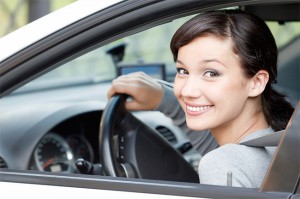 Are you curious as to whether or not the hearing impaired can safely drive? There are common misconceptions that those who can not hear, cannot safely drive. This article will clear up many misconceptions regarding deaf drivers as well as detailing certain laws and regulations.
Are you curious as to whether or not the hearing impaired can safely drive? There are common misconceptions that those who can not hear, cannot safely drive. This article will clear up many misconceptions regarding deaf drivers as well as detailing certain laws and regulations.
Can You Have a Driver's License if Your Deaf?
Yes, lack of or diminished auditory capabilities will not hinder someone’s ability to drive. That being said there are still certain precautions to take. For example, since the drivers can not hear sirens from emergency vehicles there are devices to alert drivers. There are also devices to alert drivers if there is a horn and to proceed carefully.Deaf Driving Laws
Here is a sample of the deaf driving laws in a few states:- Florida -"Deafness alone will not prevent a person from being issued a driver license."
- California -"Drivers that are deaf or hard of hearing can adjust their driver safety habits by relying more on their seeing sense to compensate for the loss of hearing."
Hearing Impaired Driving Restrictions
According to the New York State Department of Motor Vehicles (DMV), drivers are required to report significant hearing loss. The DMV then determines whether a "HEARING AID OR FULL-VIEW MIRROR (F) restriction is required on your driver license." If your driver license does have the restriction you must use a hearing aid while driving and/or your vehicle must be equipped with full-view mirrors. All the mirrors both inside and outside must meet DMV's requirements.- Ensure your Florida driver's license is up to date - Learn how to perform a drivers license check at How to Perform a Florida Drivers License Check!
- For More Information About How to Apply for a New CA Driver's License in California, Click : How to Apply for a New CA Driver's License in California
Disabled Drivers: Understanding Handicap Driving
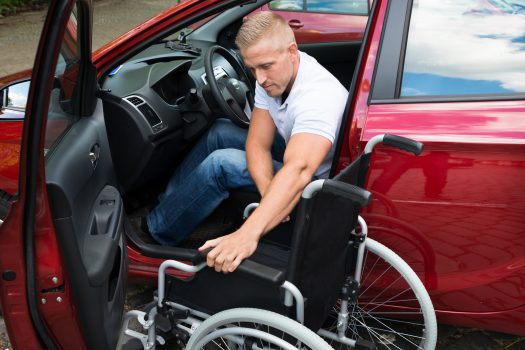 With some special adjustments and teaching it is possible for those with disabilities to navigate the roads just like able-bodied drivers. Living with a physical disability does not have to mean you are grounded. The ADA, American Disabilities Act) amended the law in 2008 so that the DMV could not deny someone a license based only on their disability. If you want more answers to your burning questions to continue to read. If you go on to enjoy this post check out our other article on Epileptic Drivers.
With some special adjustments and teaching it is possible for those with disabilities to navigate the roads just like able-bodied drivers. Living with a physical disability does not have to mean you are grounded. The ADA, American Disabilities Act) amended the law in 2008 so that the DMV could not deny someone a license based only on their disability. If you want more answers to your burning questions to continue to read. If you go on to enjoy this post check out our other article on Epileptic Drivers.
Can You Drive if You Are in a Wheelchair?
Yes, thanks to many advances in technology, disabled drivers who use wheelchairs are able to drive. Wheelchairs can be customized to match the motor skills of each individual driver for handicap driving. They are tested by the department of motor vehicles in their home state and when appropriate, restrictions will be noted on their driver's license. Disabled drivers will also need to be trained at a conventional traffic school or online traffic school.Can a Paralyzed Person Drive?
While the way in which they learn and tools which are needed might be different, it is still possible for a paralyzed person to drive. Things that are taken into consideration include the severity of paralysis and vehicle the person is operating.In What States Can a Disabled Person Drive?
State DMV's are prohibited from denying disabled drivers from securing a driver's license. Vehicles must be equipped with proper modifications and drivers must still pass a drivers test. Drivers licenses issued in one state are also valid in all other 50 states. You should also check to see if you qualify for a disabled placard in your state. In Florida, you might be eligible for a disabled placard if you suffer from a cardiac condition, can't walk more than 200ft without resting, as well as other qualifiers.How Much Does it Cost to Modify a Car for Handicapped?
According to the National Highway Traffic Safety Administration (NHTSA), costs to modify an existing car for handicap driving range from as little as $50 for special mirrors to a few hundred dollars for special hand controls. Specially equipped vehicles with ramps and raised ceilings range from $20,000 - 80,000. You can download a PDF file from the NHTSA website that provides additional information. Some vehicles let disabled drivers actually stay in their wheelchair while driving. Other vehicles allow wheelchairs to fold up for easy storage and transportation. Other possible modifications to existing vehicles include installing wheelchair lifts, raised ceilings and special floor mounts. These modifications tend to be expensive and they must be approved by state DMV's.What Makes a California Driver Different?
I'm sorry, but it seems there is no text provided for me to rephrase. Please provide the text you would like me to work on, and I'll be happy to assist! Every state has features that make its residents believe there is no other place like it. However, only a few states have cultures so unique and/or unusual that even residents of other states will agree with them. California is one of those states. Today, let's take a look at what makes California drivers different from the drivers everywhere else. [framed_box]Rain Is A Problem
We learn early in life that there are four seasons in a year: winter, spring, summer, and fall. That is not the case in many parts of California. Particularly in Southern California, there are two seasons: Summer, and Slightly-Colder-and-Very-Occasionally-Wetter-Summer. Ask anyone from anywhere other than California, and they'll tell you, “Californians do not know how to drive in the rain.” It might not be the kindest assessment, but they're not entirely wrong. A light drizzle can double time spent in the morning commute. This is because Californians seem to go to one extreme or the other when it rains. Some drivers ignore it entirely and continue driving as they would any other day, which is dangerous and can (and does) cause accidents. This slows traffic to a crawl. Alternately, they drive at half the speed limit, sometimes less, because they're terrified of the water from the sky. More rain, and the commute gets worse as accidents pile up. Think this is an exaggeration? Earlier this year it rained, and there were 275 accidents in Los Angeles County within four hours. The week before had 30 accidents during the same time span. Every once in a while though, there's a small miracle. The rain pours from the sky, but the streets are empty with no traffic. How could this possibly happen? The commuters called in sick because they'd rather use their paid time off than risk driving in the rain.[/framed_box] [framed_box]Speed Over Consideration
There’s an accusation by drivers from other states that California drivers are less considerate than those in other states. Generally, people are inconsiderate everywhere. However, California drivers in particular are perceived as… snooty individuals who deem their destination to be more important than yours, or other drivers. For example, people say California drivers follow too closely, cut in front of other drivers, and view blinkers not as signals to slow down and let someone in, but as a sign that yells, “Speed up and pass me!” Apparently California drivers do all these things because of the constant rush to get out of traffic and to their destinations. Ultimately, while it is true California drivers do all of the above, that all happens everywhere else too. The whole country could benefit from online traffic school.[/framed_box] [framed_box]Varied Terrain and Population Density
The thing that makes California drivers the most unique is that they are accustomed to driving in a wide range of conditions (barring rain, of course). Imagine a driver in Los Angeles wants to take a day trip north of the city. He could drive through the bumper-to-bumper traffic of Downtown LA, then once he escapes, he’s in the suburbs, where traffic flows differently and there are a whole host of different conditions to look out for. If that driver goes further north, he’ll find himself driving through the mountains. If it’s winter, there is a solid chance those mountains will be covered in snow. Over the mountains, and suddenly that driver is in rural California, with farmland as far as the eye can see. How long did it take him to get there from when he walked out his door downtown? Maybe an hour and a half, two hours if traffic was bad. California has a lot of dense population centers, like Los Angeles and San Francisco, but it’s also a state with a lot of land taken up by suburbs, and miles upon miles of farmland. The terrain varies from the flatlands to forests to mountains to beaches, sometimes all in the same city. This means California drivers have to learn how to drive in all those conditions. Despite the clichés about Californians in the rain and their apparent lack of consideration for other drivers, if you find yourself driving in an area or terrain you’re not familiar with, you really want a Californian. [/framed_box]Top 10 Defensive Drivers in The World
 Do you ever think while driving that you are truly one of the best defensive drivers in the world? You feel invincible because nobody has ever crashed into you… due to your impeccable ninja driving skills that manage to help you dodge all the bad drivers on the road… and you have even managed to never get a ticket by avoiding the police and speeding under the radar. You are truly one of the top defensive drivers in your hood, a master of driving! However, the below drivers may have you beat ?
Do you ever think while driving that you are truly one of the best defensive drivers in the world? You feel invincible because nobody has ever crashed into you… due to your impeccable ninja driving skills that manage to help you dodge all the bad drivers on the road… and you have even managed to never get a ticket by avoiding the police and speeding under the radar. You are truly one of the top defensive drivers in your hood, a master of driving! However, the below drivers may have you beat ?
1. Mad Max
I know what you’re thinking: Nobody from Mad Max can possibly be considered a great defensive driver. Think again! Have you seen all the armor on the Mad Max vehicles?! There is absolutely no possibility that another vehicle can get through that armor and damage their vehicle or hurt them!2. Driving Miss Daisy
For those that are not familiar with the movie, an elderly woman, Miss Daisy, wanted to keep her independence, but ended up crashing her car. After she does this, her son arranges for her to have a chauffeur. Want to know the best way that you can be a safe, defensive driver? Don’t even drive at all! Have somebody else drive you around. You will never crash into anybody or get any tickets. Plus, you can have all the margaritas you want and still make it home safe!3. Trojan Warrior
Back in the heyday of the Trojans, they galloped around in some pretty fancy chariots. Of course, these defensive drivers had their swords and shields to use for defensive purposes to protect themselves and their chariots. How could they not be safe drivers with all their armor?4. An Individual with a Pillow Filled Car
Have you ever driven in a car that is filled to the brim with pillows? Of course not! Most people haven’t, but that one random individual that does travel in pillow heaven would have the benefit of being super safe with all that extra padding. It’s like driving on a cloud. Every hump and bump on the road is A-Okay because he does not feel a thing! Yay for money saved because it should keep the “bodily injury” costs down… hopefully!5. A Driver on Carmageddon
The best Carmageddon drivers were witnessed in the original, when everyone was driving cars like yours and you had to kill them. Everyone was out for blood. Of course, some might argue that better defensive drivers are in the second version... because it is safer to drive when there are absolutely no other drivers/or when only zombies on the roadway. If nobody else is around, nobody can hit you. As a bonus, you can drive as crazy as you want and there’s nobody else around to get in your way!6. Power Rangers
Anybody that grew up in the 90’s knows that the Mighty Morphin Power Rangers vehicles were pretty awesome and when they joined together, they formed the super-powerful Megazord. No villains or other vehicles, none the less, would possibly mess with the Megazord, if they came across it on the road.7. Demolition Derby Driver
I know, I know, the whole point in a demolition derby is crashing and completing demolishing other vehicles, so this one is a shocker. However, within those cars, the driver has special racing straps/seatbelts, that keep them firmly in their seat. In addition, typically, there are alterations to the car to keep the driver safe. Plus, they must be skilled drivers to win!8. Michelin Man
The Michelin Man would be the safest of safe drivers. He is just made of tires, fluff, and air, so any bumps on the road wouldn’t hurt a bit. He has been representing Michelin tires since 1894, so he should know a thing or two about cars and driving!9. Bumper Car Driver
While bumper cars can get a tad bit bumpy, these drivers could not be any safer! Firstly, they never leave the amusement park. Careening down the path at a whopping top speed of 2 mph, they are far from fast and furious! Plus, they can only drive in one direction… in counter-clockwise circles… within a 50 ft. x 50 ft. pen! Most of the fellow drivers are children that are out to get their siblings or friends. Even if the driver comes across a child that happened to develop a personal vendetta against them upon first glance, they have that lovely bumper buffer to absorb the blows of their tiny attack. Plus, there is always a competent ride attendant present to chaperone all the hustle and bustle of the two-minute ride. Bump away!10. Someone who hasn’t bathed in over 3 months
The smellier, the better to keep other cars away! They just need to roll the window down and let their au natural Eau de Parfum do the talking. Just like the Grinch, nobody would want to touch him or his car with a thirty-nine-and-a-half foot pole!Were Car Radios Ever Illegal? Should They Be?
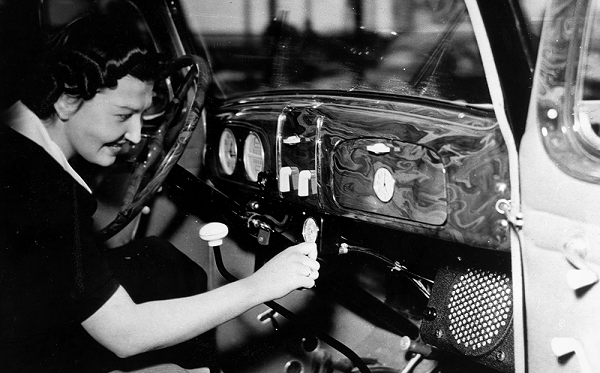
It's hard to think of a road trip, even if it's just to the local market, without some tunes or chatter filling the car. Whether it's a trusty AM/FM signal broadcasting from the antenna or the vast universe of satellite radio, there's something magical about the way sound waves turn a simple drive into an adventure filled with stories and rhythms. Just like explorers of the past had maps and stars, today's drivers have music and news, bringing the world a bit closer with every mile. Each dial twist or button press brings a new tale or melody, sparking curiosity about what's next. Jump in, fasten your seatbelt, and let's see where the radio waves take us!
But car radios weren't always such a luxury. In fact, when car radios first hit the scene in the 1920s, they weren't only expensive, but they were somewhat of an inconvenience. Yes, the first car radios appeared in Chevrolet cars - and they were so big that they barely even fit into the car when you accounted for the size of their speakers, antennas and batteries. [framed_box]My how things have changed. Despite their initial awkwardness, radio technology advanced over the next decade to where they became smaller and more easily integrated into vehicles for drive-time entertainment. Around the time radios became more widely accepted, however, they were also met with some ire. In fact, many legislators believed that car radios caused a distraction - so much so that legislation was introduced in many states to fine drivers listening to car radios. [/framed_box] [framed_box]Government gets involved. Specifically, in Minnesota and Missouri, legislation was introduced to completely ban car radios. Other states like New York, New Jersey, Ohio and Illinois introduced legislation that would fine drivers found to be operating while listening to their car radios. None of the legislation ever became law - but it wasn't for the lack of vocal support for such bills. Much like how texting and driving and cell phone use is associated with an uptick in auto accidents, many at the time believed that car radios led to more accidents on the road. Those in support of car radios argued the opposite, and that listening to car radios kept drivers more engaged on the road. Those in support of car radios were eventually found to be correct in their belief, as no formal study ever connected listening to the radio in a car with an increase in auto accidents. [/framed_box] [framed_box]Should Car Radios be Banned? There was no scientific data to suggest that car radios led to more auto accidents back in the 1930s when the issue was being seriously debated - and there's no evidence to suggest that things have changed in the present day. Yes, drivers aren't without distractions these days - perhaps more now than ever when you take smart phones into consideration. But the car radio doesn't just serve as an entertainment medium while drivers are commuting from Point A to Point B, it also serves a much larger purpose:[/framed_box] [framed_box]Informational Radio helps drivers learn of accidents and weather conditions while they're on the road, helping them to better navigate routes and plan. Drivers can also catch up on the latest local, national and world headlines as they commute.[/framed_box] [framed_box]Employment The car radio has also led to a whole new entertainment industry. Radio stations these days are big business, and it is largely those that listen while they're in the car that drive ratings, advertising dollars and success for said stations.[/framed_box] [framed_box]Entertainment Just because it's worth mentioning again, radio also helps entertain drivers while they're on the go. In their cars, they can listen to the baseball game, their favorite pop, rock or country stations, or their favorite news station. With the variety of radio stations available today - not to mention the options that satellite radio also provides - it's hard for drivers to not be entertained while they're on the go.[/framed_box] [framed_box]Let’s Keep ’Em Legal! We take car radios for granted today, but they were once nearly outlawed in some states. Yes, they can be a distraction - but so can just about anything in the car if not treated responsibly. For more information on minimizing distraction while you're behind the wheel, contact our defensive driving course today.[/framed_box]How To Access Your Driving Record
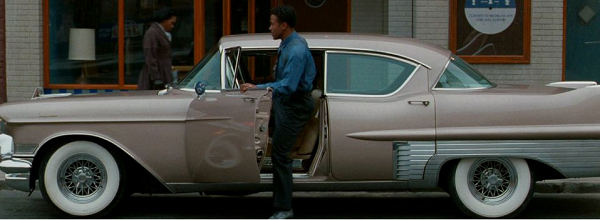 At some point in time, you may find yourself needing to access your driving record, in order to submit to a court, employer, or for any other purpose. Here are some helpful steps for requesting your driving record for some of our most popular states: California, New York, Texas, Florida, and Arizona.
California
At some point in time, you may find yourself needing to access your driving record, in order to submit to a court, employer, or for any other purpose. Here are some helpful steps for requesting your driving record for some of our most popular states: California, New York, Texas, Florida, and Arizona.
California
 You can request an online unofficial copy of your driving record directly from the California DMV website for a $2 fee. You would first need to be a certified user of the DMV website by registering online. You can do this through this link: https://www.dmv.ca.gov/FIM/sps/uscfed/usc/self/account/create . Once your California DMV user account is set up, you can go to this link https://www.dmv.ca.gov/portal/dmv/detail/online/dr to request your unofficial online driving record. Please make sure that you have a printer ready and that it is in working order, so you can print out the driving record when it opens, as you will only have one opportunity to print out your record after the fee has been paid. If not, you will need to repay the fee to access the record again.
Please note that if you need an official driving record document, you will need to fill out an INF 1125 document (PDF accessible on the link provided above) and mail it in to the DMV Headquarters. The address is listed on the form.
New York
You can request an online unofficial copy of your driving record directly from the California DMV website for a $2 fee. You would first need to be a certified user of the DMV website by registering online. You can do this through this link: https://www.dmv.ca.gov/FIM/sps/uscfed/usc/self/account/create . Once your California DMV user account is set up, you can go to this link https://www.dmv.ca.gov/portal/dmv/detail/online/dr to request your unofficial online driving record. Please make sure that you have a printer ready and that it is in working order, so you can print out the driving record when it opens, as you will only have one opportunity to print out your record after the fee has been paid. If not, you will need to repay the fee to access the record again.
Please note that if you need an official driving record document, you will need to fill out an INF 1125 document (PDF accessible on the link provided above) and mail it in to the DMV Headquarters. The address is listed on the form.
New York
 For New York, you can request an official certified DMV driving record (abstract) online, by mail, or in person at a DMV location. In order to request your driving record online, you must first register for a New York DMV account. You can sign up by going to this link: https://my.dmv.ny.gov/crm/?register=T . Please note that you must have your most recent driver’s license / learner’s permit / non-driver ID information available in order to register. Once your account is set up, you may request the driving record through the MyDMV site. The fee for the online driving record is $7. Once you order the driving record, you will be able to access it to download to your computer and print it up until 11:59 PM the following day.
If you would like to request your driving record by mail, you would need to fill out a MV-15 form “Request for DMV Records,” accessible through this link: https://dmv.ny.gov/dmv-records/get-my-own-driving-record-abstract and mail it, along with a photo copy of your proof of identity, and a personal check or money order for $10.00 payable to “Commissioner of Motor Vehicles” and mail it to MV-15 Processing, NYS Department of Motor Vehicles, 6 Empire State Plaza, Albany, NY 12228.
If you would like to request your driving record in-person at a DMV location, you would just need to fill out an MV-15 form “Request for DMV Records” (accessible through the above link) and bring proof of your identity and $10.00 for the fee.
Texas
For New York, you can request an official certified DMV driving record (abstract) online, by mail, or in person at a DMV location. In order to request your driving record online, you must first register for a New York DMV account. You can sign up by going to this link: https://my.dmv.ny.gov/crm/?register=T . Please note that you must have your most recent driver’s license / learner’s permit / non-driver ID information available in order to register. Once your account is set up, you may request the driving record through the MyDMV site. The fee for the online driving record is $7. Once you order the driving record, you will be able to access it to download to your computer and print it up until 11:59 PM the following day.
If you would like to request your driving record by mail, you would need to fill out a MV-15 form “Request for DMV Records,” accessible through this link: https://dmv.ny.gov/dmv-records/get-my-own-driving-record-abstract and mail it, along with a photo copy of your proof of identity, and a personal check or money order for $10.00 payable to “Commissioner of Motor Vehicles” and mail it to MV-15 Processing, NYS Department of Motor Vehicles, 6 Empire State Plaza, Albany, NY 12228.
If you would like to request your driving record in-person at a DMV location, you would just need to fill out an MV-15 form “Request for DMV Records” (accessible through the above link) and bring proof of your identity and $10.00 for the fee.
Texas
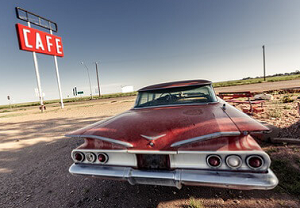 For Texas, you can order a copy of your driving record online or through the mail. You can access it online through the Texas Department of Public Safety website https://www.dps.texas.gov/DriverLicense/driverrecords.htm . You will need the following information to access your driving record: your Texas driver’s license, your current DPS audit number, date of birth, last 4 digits of your social security number, credit card (for payment), adobe PDF reader, access to a working printer, and an understanding of the type of driving record that you need. Here are the different types of driving records available: Type 1 – Status Record, Type 2 – 3 year history, Type 2A – Certified 3 year history, Type 3 – List of all crashes and violations, Type 3A – Certified list of all crashes and violations, Type AR – Certified abstract of complete driving record.
If you would like to request your driving record by mail, follow the directions on the Driver Record Request Form (PDF), which is available on the link provided above.
Florida
For Texas, you can order a copy of your driving record online or through the mail. You can access it online through the Texas Department of Public Safety website https://www.dps.texas.gov/DriverLicense/driverrecords.htm . You will need the following information to access your driving record: your Texas driver’s license, your current DPS audit number, date of birth, last 4 digits of your social security number, credit card (for payment), adobe PDF reader, access to a working printer, and an understanding of the type of driving record that you need. Here are the different types of driving records available: Type 1 – Status Record, Type 2 – 3 year history, Type 2A – Certified 3 year history, Type 3 – List of all crashes and violations, Type 3A – Certified list of all crashes and violations, Type AR – Certified abstract of complete driving record.
If you would like to request your driving record by mail, follow the directions on the Driver Record Request Form (PDF), which is available on the link provided above.
Florida
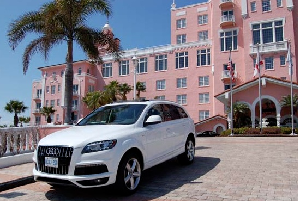 For Florida, you have two options to request your driving record. You are able to request a copy of your driver’s license in person at a Driver License office, a tax collector, a court clerk, or from a private vendor or you can request it by mail.
In order to request a copy of your driving record by mail, you would need to fill out a Driver License Request Form, which can be accessed through this link: http://www.flhsmv.gov/ddl/abstract.html and provide the appropriate fee, which is $8 for a 3 year record and $10 for a 7 year record. You will need the following information, in order to request your driving record: full name, birth date, social security number, Florida Driver License number, and the address where to send the record. Send the form and payment to Bureau of Records, P.O. Box 5775, Tallahassee, Florida, 32314-5775. Please note that it may take up to two weeks for your request to be processed.
Arizona
For Florida, you have two options to request your driving record. You are able to request a copy of your driver’s license in person at a Driver License office, a tax collector, a court clerk, or from a private vendor or you can request it by mail.
In order to request a copy of your driving record by mail, you would need to fill out a Driver License Request Form, which can be accessed through this link: http://www.flhsmv.gov/ddl/abstract.html and provide the appropriate fee, which is $8 for a 3 year record and $10 for a 7 year record. You will need the following information, in order to request your driving record: full name, birth date, social security number, Florida Driver License number, and the address where to send the record. Send the form and payment to Bureau of Records, P.O. Box 5775, Tallahassee, Florida, 32314-5775. Please note that it may take up to two weeks for your request to be processed.
Arizona
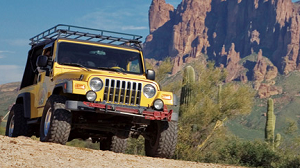 For Arizona, requesting your driving record is very easy online. You would go to the following link: https://servicearizona.com/webapp/citizenMVR/begin.do Then, you would want to provide your personal information, pay the fee, and then download and print your Driver License Motor Vehicle Record results. You must have the following information available to access the record: Arizona driver’s license number, birth date, last four digits of your social security number, and a major credit card for payment. Please note that you should have your printer ready to print out the driving record.
For Arizona, requesting your driving record is very easy online. You would go to the following link: https://servicearizona.com/webapp/citizenMVR/begin.do Then, you would want to provide your personal information, pay the fee, and then download and print your Driver License Motor Vehicle Record results. You must have the following information available to access the record: Arizona driver’s license number, birth date, last four digits of your social security number, and a major credit card for payment. Please note that you should have your printer ready to print out the driving record.
-
For information on How to Apply for a New CA Driver's License in California (For 18+), click: How to Apply for a New CA Driver's License in California (For 18+)
- Get your official California ID cards hassle-free with our "California ID Cards" service and stay prepared for any identification needs.
- Navigating car registration in California made easy - Discover how to register a car in California at How to Register a Car in California!
- For information on Drivers License Status CA and License Renewals, click: Check Drivers License Status CA and License Renewals!
- For More Information On Florida Drivers License, Click : Florida Drivers License
- For More Information About Florida Drivers License Check, Click : How to Perform a Florida Drivers License Check
- Learn how to easily title and register your car in Florida with our comprehensive guide on Florida car registration and the titling process.
- Learn how to check the status of an expired or suspended license in New York with our comprehensive guide on NY Expired Suspended License Status Check.
- Learn More About, Tennessee DMV – All Things Car Related
Don’t Get Stranded This Winter Without Your Smartphone
Believe it or not, a winter snowstorm's best tool could be **your smartphone**. A new smartphone app has been released specifically designed to help motorists who become stranded on the roadway during a winter snowstorm. Now, you don't need an online traffic school to understand the importance of taking precautions when you drive (although it does help) especially if you plan on driving during winter months when the weather is likely to take a turn for the worst. the best advice is always to stay home if at all possible and avoid going out in your car. If you do have to drive you need to be certain you thoroughly check out your vehicle first, throw a shovel and some road salt in the trunk, and, if you have a smartphone, download the new app, Winter Survival Kit. I realize we offer the nation's best (in our opinion) comedy traffic school, but this is no joke. The Winter Survival Kit smatphone app might just come in handy this winter. Or even next winter. The new app can pinpoint your location exactly, notify police or emergency services; contact your friends and family and calculate how much longer your gasoline (if you have any left) will last. The GPS function of the phone will not work if you are in an area with spotty cell reception, but otherwise, it is fairly reliable. The Winter Survival Kit app is hardly the only survival app for your smartphone. There are also, Help I Crashed My Car, Emergency Radio, iMapWeather Radio, iTriage, Close Call and pMonitor, all of which aim to help drivers in case of an emergency, or help them avoid an emergency by providing useful information and safety tips. We definitely don't condone distracted driving of any sort, which means we don't want you trying to use your smartphone while you drive. But if you are going driving this winter it might just be a good idea to toss your smartphone in the glove box, fully charged, just in case you need it. Image: dan / FreeDigitalPhotos.netSafe Vehicles Make For Safer Roads
Traffic deaths are **dropping** nationwide. This improvement comes thanks to **traffic school** and awesome **new safety features** in modern cars zooming out of factories. It wasn't so long ago that safety features like airbags were options on new vehicles, but today almost all new cars come equipped with not driver side air bags, but one for the passenger and possibly the back seat passengers and or side curtain airbags. There are also new features like infra-red heads-up displays and new higher illumination head lights both of which help drivers see better at night. Anti-lock brakes are now standard on almost new cars as well. This decreases the effort required by the driver when the roads are slick with ice or snow. It will help keep the brakes from locking-up, preventing rear end collisions or drifting into an intersection when you try to stop. Traction control is also a fairly common new safety device in new vehicles. With traction control, a computer adjusts how much power is delivered to the wheels to prevent slipping, possibly even apply brakes to specific wheel in order to give the driver the most possible control. Electronic stability control provides a similar service for drivers, only it takes control when a driver is executing a serious turn, helping the car stay where it is supposed to go instead of sliding around. Even the headrests inside your vehicle have been improved, providing more cushioning and better protection against head and neck injuries. All of these new safety features still pale in comparison to our online traffic school, but every little bit counts when it comes to being safe behind the wheel. Image: manostphoto / FreeDigitalPhotos.net7-Day Support
Rain, snow, or shine - our support team is here 7 days a week ready assist you with any questions you may have.
(800) 660-8908
Privacy Policy

Refund Policy – Made Simple

Terms of Use

Nepal Relief Fund
A portion of today's sale will go towards helping the earthquake victims in Nepal.
Earn Money With Your Car
Register with UBER and receive a New York TLC Defensive Driving class for FREE by using the UBER provided coupon code.

 Live Chat
Live Chat


